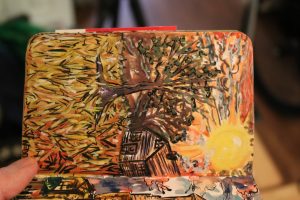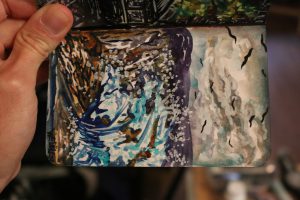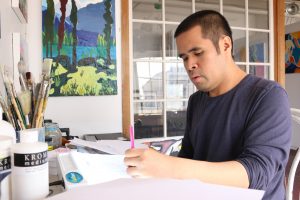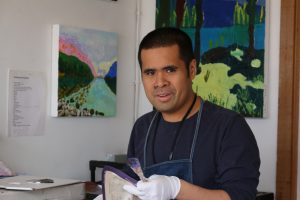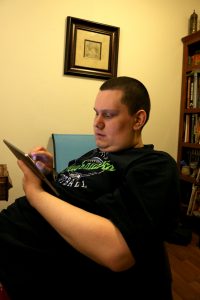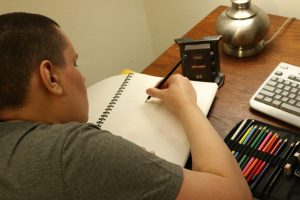After first visiting our three Stateside artists in April – James Frye, JA Tan and Angela Weddle – Dom and Jeremy have been back for a second visit to again work with them and to see the artwork that they have been preparing for our films on Diagnosis, Neurodiversity and Art. The trip was a great success with Dom and Jeremy thoroughly enjoying the time they were able to spend with the artists.
A Glimpse into Angela’s sketchbook.
AN UPDATE ON OUR FILMS
The three short films that we have been working on during 2018 capturing the voices of autistic adults, and the art and animation of autistic artists, are nearing completion. Complemented by the beautiful cello compositions and playing of Sarah Moody we now are approaching the final cuts. This is an exciting time! Now into 2019 we shall be making the last minute changes ready to roll the films out at various locations during the Spring. Watch this space for an update on our progress and the locations where the films will be screened!


